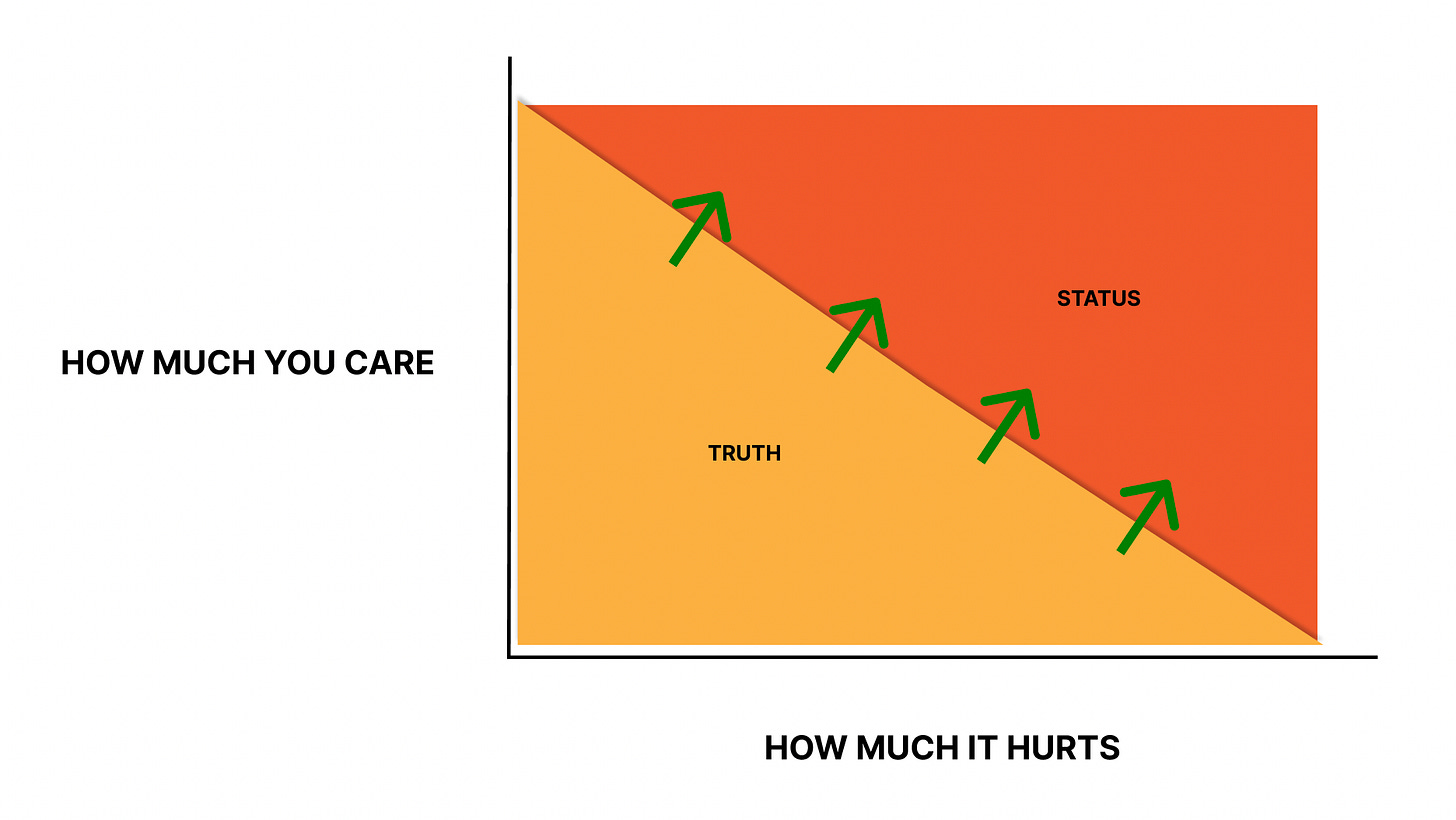How to fight fashion
Fighting for truth requires fighting against fashion, both within and without.
Within:
Refusing to care about what’s fashionable
Holding what’s fashionable in suspicion
Without:
Speaking unfashionable truths in public, to make them socially safer for people who are still afraid
Giving unfashionable opinions a good name by being honorable, rigorous, calm, and confident in their defense
Refusing to care about what’s fashionable
Recall psycho-economics 102:
As social status goes up, care for truth goes down, unless counterbalanced by an equal increase in care for truth.
Propagandists often use this formula against you.
But you can invert this formula and take your power back. As social status goes down, our ability to care about truth goes up.
You can deliberately seek low status to free yourself from status concerns, and free yourself to care more about truth.
Every day I try to tweet something that
I believe is true, and
I’m pretty sure will reduce my social status.
This is a kind of emotional weightlifting — leaning into the pain, in a measured way, in order to build up the ability to disregard status, because someday (if not right now) it will be important to do so.
One of my favorite stories involves the Ancient Greek philosopher Cato the Younger. I read this once as a teenager and never forgot it:
Accustom yourself to be ashamed only of what is actually shameful.
If you care about truth, you must set yourself up for success in this way. The battle is always on, we’re already in it. There’s already a dividing line inside each of us, and when a new truth falls on the “status” side of that line, we won’t care enough about truth to heed it.
The goal is to advance against that line, and reduce its territory to nothing.




I really enjoyed this. I am naturally very sympathetic to this suspicion of fashion. But it seems that what is fashionable may occasionally, by chance, be aligned with what is true. How then do you develop the ability to discern what is true within what is fashionable? What do we do with this law's (fashion =/= truth) occasional exceptions? Rules always have exceptions, but in the case of truth, the stakes seem too high to simply accept that. My question in a shorter form: how do we account for instances in which fashion and truth happen to be aligned?